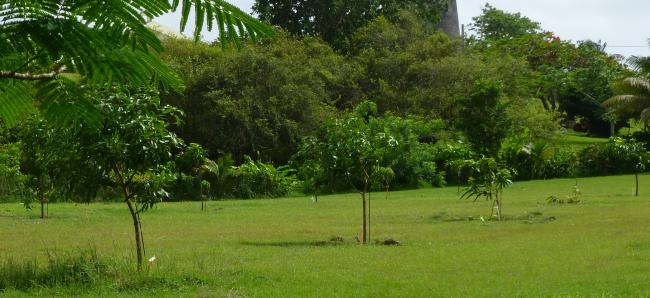Mango trees collection moves out

The Cirad mango collection comprises varieties from the Ivorian collection in Korhogo, which itself descended from a collection established in the 1940s-1950s at the Fouyala station in Guinea. The collection was established in the early 1990s to address the closure of research stations in Africa and to preserve trees from pests. Over a hundred mango varieties left Korhogo for the Cirad station in Vieux-Habitants, on the island of Basse-Terre, Guadeloupe, where quarantine diseases are absent. Today, the station is closing, and the collection is moving to the INRA site in Godet, Petit-Canal, Grande-Terre. However, the trees cannot be transplanted. To move a mango collection, it must be recreated in miniature. Rootstocks receive scions from each variety, and these convalescent plants are placed in a greenhouse. When their vigor is sufficient, they are transplanted to their new home in the Godet plot.
This is a delicate operation because mango grafting is difficult to achieve. In this case, nearly 300 grafts were necessary to preserve the 95 varieties for transplantation in multiple copies. Three years of work were required to achieve this, but the new collection has now taken root. It will receive attention for at least two more years to ensure that it acclimates well to its new environment and can be used to disseminate its varieties.

